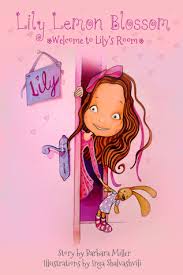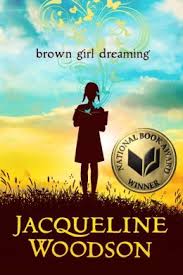As I’ve watched the growth of children’s independent publishing this year, it’s clear that there’s a major problem: an inflated number of reviews.
In the independent world, a review on Amazon, GoodReads, LibraryThing, etc. is gold. Many of the publicity possibilities open to self-published folks depend on gaining a certain number of reviews on your book.
The biggest and most influential promotion service, Bookbub.com, is a subscription service that sends email to millions of readers about eBook specials. After its launch in 2012, it grew rapidly, found big investors last year and now commands a huge audience. Originally supported by independent authors and publishers, it currently reserves 25-50% of its ads for traditional publishers. In the independent world, it’s considered crucial to your book’s success to “get a Bookbub.” During the days your book is listed at FREE or reduced rates of $0.99 or $1.99, the book may download thousands of copies.
One local friend said his first Bookbub, he had 12,000 downloads of his free title. He’s typical of many indie authors because he has a series of books. Of the 12,000 who downloaded Book 1 for free, a couple thousand bought Book 2, 3 and 4. The sales of the other books in the series paid for the BookBub ad, and left him capital to do another book in the series.
A year ago, you wouldn’t be considered for a Bookbub with fewer than 25 reviews on your title. These day, I’ve heard more like 75-100 reviews are needed. When you apply for a BookBub ad, you’re told that they accept less than 20% of the applications.
What’s an author to do? Reviews on Amazon are GOLD! Reviews on Amazon might get you a BookBub Ad–which might get you thousands and thousands of downloads. Which might mean you have a chance of selling other books.
Yes, reviews on Amazon are GOLD! When an author asks you to review a book on Amazon, it’s crucial.
Social Proof. Reviews on online stores is considered proof that others like a certain product, or social proof. Even negative reviews are good because they are proof that the product hasn’t received reviews from only friends and family.
Comparison of Reviews of Two Books
I am going to compare the reviews of two books in a neutral manner. That is, I’ll set aside my personal evaluations of the quality of the titles. One is a hugely popular, free, independent title, while the other is the winner of the 2014 National Book Award for Young People Literature. From that alone, you might suspect that one is better than the other, and on that, I’ll make no statement because it’s not the point here. You may also suspect that the NBA Award winner would have far and away more reviews. Wrong.


This may not be the fairest comparison: picture books and novels may not receive the same amount of reviews. It’s just that these two books came to my attention at about the same time and I was struck by the difference in the number and quality of the reviews for each book.
Comparison of books: picture book v. novel; self-published v. traditionally published; ebook only v. available in many formats.
Comparison of the Amazon Reviews
As of today, Lily Lemon Blossom’s Welcome, by Barbara Miller has 3569 reviews with an average rating of 4.0 out of 5.0 stars.
5 Stars: 1932
4 Stars: 627
3 Stars: 389
2 Stars: 201
1 Stars: 420
As of today, Brown Girl Dreaming, by Jacqueline Woodson has 50 reviews with an average rating of 4. 8 out of 5.0.
5 Stars: 42
4 Stars: 7
3 Stars: 0
2 Stars: 0
1 Stars: 1
How is it that an eBook-only picture-book has 3569 reviews? It’s easy, if she’s done multiple Bookbub ads. With 12,000 people downloading a typical FREE eBook advertised in Bookbub, a clever author puts prominent links asking for reviews at the back of the ebook. The ASK is important because it tells people of the need for reviews. Again, it’s one of the popular techniques of today’s independent author, a method that successfully gets multiple reviews on books.
Or is it that easy? In the face of such overwhelming numbers, it’s easy to be suspicious that the reviews are inflated somehow. No one can provide evidence to prove or disprove it–yet the suspicions remain. It’s certainly possible for all those reviews to be bonafide, given the surprising power of a Bookbub. Are book reviews artificially inflated somehow just for the possibilities of promotions like BookBub? Or does BookBub allow for for the inflated number of reviews?
Does it mean that one or the other sells better or makes more money? There’s no way to know unless the authors were to speak out on their incomes. It’s easy to say that both are selling well and making money.
Is this just the difference in a “popular” book and a “literary” book? Possibly. Do popular books may get more discussion surrounding them than literary books? Or do authors of popular books just emphasize reviews more than authors of literary books?
When is 420 One-Star Reviews NOT a Bad Thing?
When it is countered by 1932 5-star reviews?
The thing about reviews is that people tend to artificially inflate their opinion of a book. Many people will say, “I don’t like to trash a book. I only want to give good reviews.” It may actually be a good thing that 420 people felt honest enough to give Lily Lemon Blossom a very bad review.
In the end, the 420 matter less than the total of 3569 overall reviews. The fact that so many chose to leave ANY kind of review helps sell the book and the rest of the books in its series. It’s a book that many people are talking about, so there must be something to it, right? People download the free introductory book to find out what the discussion is about.
Get Thee a Goodly Number of Reviews!
In the midst of all of this, I am an a hybrid author who would love to see 3569 reviews on my traditionally and independently published books. Don’t you want overwhelming reviews on YOUR book?
But it’s daunting. To get that many reviews, I need a Bookbub; to get a BookBub, I need 75-100 reviews minimum and then a lot of luck; the Bookbub might then be a springboard to even more views and possibly a best-seller! But it’s a Catch-22. How do you get the 100 reviews in the first place, so that you can get the Bookbub to get lots of reviews and sales?
Online reviews as social proof may have been a good idea five years ago, but today, I wonder about their usefulness. But the other conclusion you must draw is that Bookbub.com has become a player in the book world in a huge way: if a BookBub ad has the power to make or break the career of an Indie author, it’s an interesting world indeed. Will it soon make or break the career of ANY writer? Already, indie authors who built up BookBub are muscled out by slots reserved for the better-paying traditional publishers; will it ever become limited to ONLY traditional published books?
The case of the inflated number of book reviews says much about the current state of the industry.
Hi, Judy:
It is indeed HARD. Any tips you’ve found that help?
Darcy